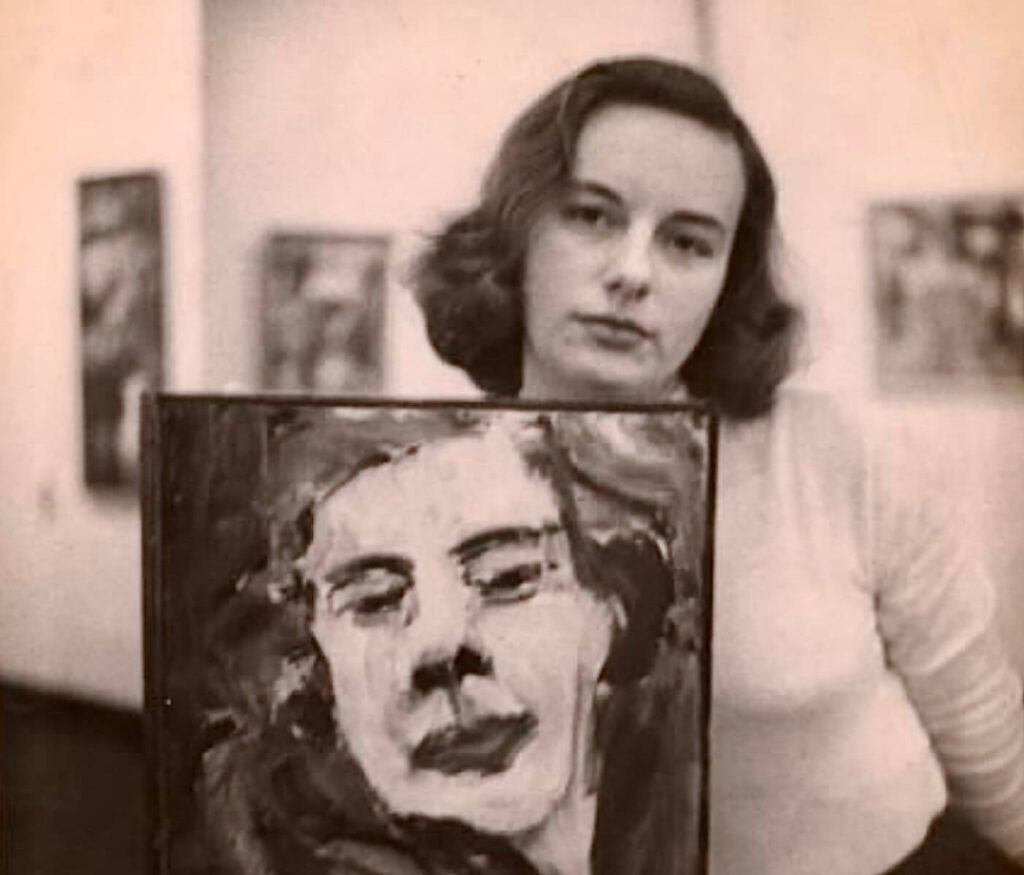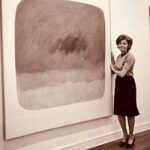Grace Hartigan
Grace Hartigan, born on March 28, 1922, in Newark, New Jersey, was a prominent figure in the Abstract Expressionist movement. Her dynamic use of color, bold compositions, and innovative techniques earned her a significant place in American art history. This article delves into Hartigan’s life, artistic evolution, and highlights three of her most notable works.

Early Life and Education
Grace Hartigan, originally named Grace George, grew up in a modest household. Her early life was marked by a love for literature and a keen interest in visual arts. She married Robert Jachens at the age of 17, and the couple moved to California, where Hartigan began to explore her passion for painting. After a few years, the marriage ended, and Hartigan returned to the East Coast, settling in New York City.
Career and Artistic Development
Hartigan’s move to New York City in the early 1940s was a turning point in her career. She immersed herself in the vibrant art scene, where she befriended and was influenced by notable artists such as Jackson Pollock, Willem de Kooning, and Mark Rothko. Her early work was characterized by its bold use of color and dynamic brushwork, reflecting the influence of Abstract Expressionism.
Transition to Figurative Abstraction
While Hartigan’s early work was purely abstract, she began to incorporate figurative elements into her compositions in the mid-1950s. This shift was partly influenced by her interest in classical art and literature, as well as her desire to explore new forms of expression. Her work during this period is characterized by its blend of abstraction and figuration, creating a unique and innovative style that set her apart from her contemporaries.
Artistic Style and Themes
Grace Hartigan’s work is marked by its vibrant use of color, dynamic compositions, and an often lyrical quality that evokes a sense of movement and emotion. Her paintings frequently feature bold, gestural brushstrokes and complex, layered compositions that draw the viewer into a deep, immersive space.
One of the recurring themes in Hartigan’s work is the exploration of identity and the human experience. Her paintings often feature abstracted figures and symbolic imagery, reflecting her interest in mythology, literature, and personal experiences. This thematic exploration is evident in her use of vibrant colors and dynamic forms, creating a sense of drama and intensity in her work.
Notable Works
1. **”The Persian Jacket” (1952)
“The Persian Jacket” is one of Grace Hartigan’s most celebrated works, created during the peak of her Abstract Expressionist period. The painting features a dynamic interplay of bold, gestural brushstrokes and vibrant colors, creating a sense of movement and energy. The composition is complex and layered, drawing the viewer into a deep, immersive space.
The title “The Persian Jacket” suggests a connection to classical art and literature, reflecting Hartigan’s interest in exploring themes of identity and the human experience. The painting’s vibrant colors and dynamic forms create a sense of drama and intensity, evoking the feeling of a classical Persian garment. This work exemplifies Hartigan’s ability to convey emotion and movement through abstraction.
2. **”Grand Street Brides” (1954)
“Grand Street Brides” is a powerful and evocative work that reflects Hartigan’s deep engagement with social and personal themes. The painting features a series of abstracted figures set against a vibrant, colorful background. The figures appear to be brides, creating a sense of celebration and ritual.
This work is notable for its use of vibrant colors and dynamic forms, with the abstracted figures creating a sense of movement and energy. The composition creates a sense of tension and intensity, reflecting the social and personal themes explored in the painting. “Grand Street Brides” is a powerful example of Hartigan’s ability to convey complex themes through abstraction.
3. **”Shinnecock Canal” (1957)
“Shinnecock Canal” is another notable work that showcases Hartigan’s mastery of color and composition. The painting features a dynamic interplay of vibrant colors and bold, gestural brushstrokes, creating a sense of movement and energy. The composition is fluid and rhythmic, with the colors and forms creating a sense of harmony and balance.
This work reflects Hartigan’s interest in the natural world and its influence on her artistic style. The vibrant colors and dynamic forms create a sense of depth and dimension, evoking the feeling of a flowing canal. “Shinnecock Canal” is a testament to Hartigan’s ability to capture the essence of nature and movement through abstract forms.
Techniques and Innovations
Grace Hartigan was known for her innovative use of materials and techniques. She often employed a variety of media, including oil, acrylic, and watercolor, experimenting with different textures and surfaces to achieve her desired effects. Her use of vibrant colors and dynamic brushwork created a sense of movement and energy in her work.
One of Hartigan’s most significant innovations was her ability to blend abstraction with figuration. Unlike many of her contemporaries, Hartigan’s work often featured abstracted figures and symbolic imagery, reflecting her interest in classical art and literature. This ability to combine abstraction with figuration set Hartigan apart and made her work profoundly impactful.
Personal Life and Influence
Grace Hartigan’s personal life was as dynamic and colorful as her paintings. She was married several times and had a tumultuous personal life, but her dedication to her art remained unwavering. She was a passionate teacher and mentor, sharing her knowledge and passion for art with younger generations. She taught at several institutions, including the Maryland Institute College of Art, where she inspired and influenced many emerging artists.
Hartigan’s influence extended beyond her own work, as she was an active participant in the New York City art scene and a member of several artist collectives. Her commitment to exploring new forms of expression and her ability to convey complex themes through abstraction made her a significant figure in American art.
Recognition and Legacy
Grace Hartigan’s contributions to modern art have been widely recognized and celebrated. Her works are held in major museums and collections around the world, including the Museum of Modern Art in New York, the Whitney Museum of American Art, and the Smithsonian American Art Museum. She received numerous awards and honors throughout her career, including a Guggenheim Fellowship and a National Endowment for the Arts grant.
Hartigan’s legacy is marked by her innovative techniques, her bold thematic explorations, and her profound influence on subsequent generations of artists. Her work continues to inspire and challenge artists and viewers alike, reflecting her enduring relevance and significance in the art world.
Conclusion
Grace Hartigan was a pioneering artist whose work spanned several styles and movements, from Abstract Expressionism to figurative abstraction. Through her most notable works, such as “The Persian Jacket,” “Grand Street Brides,” and “Shinnecock Canal,” Hartigan explored the complexities of color, form, and space, while addressing profound social and personal themes. Her innovative techniques, bold thematic explorations, and profound influence on subsequent generations of artists ensure her lasting legacy in the history of modern art. Hartigan’s ability to convey emotion and movement through abstract forms continues to captivate and inspire, solidifying her place as a key figure in American art.



